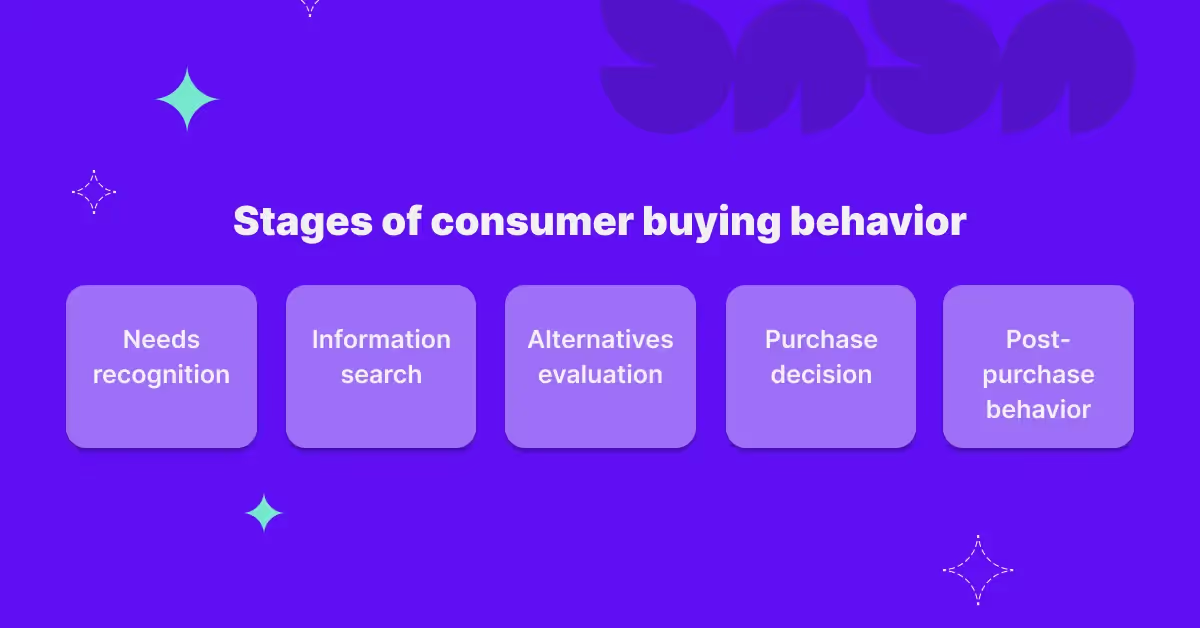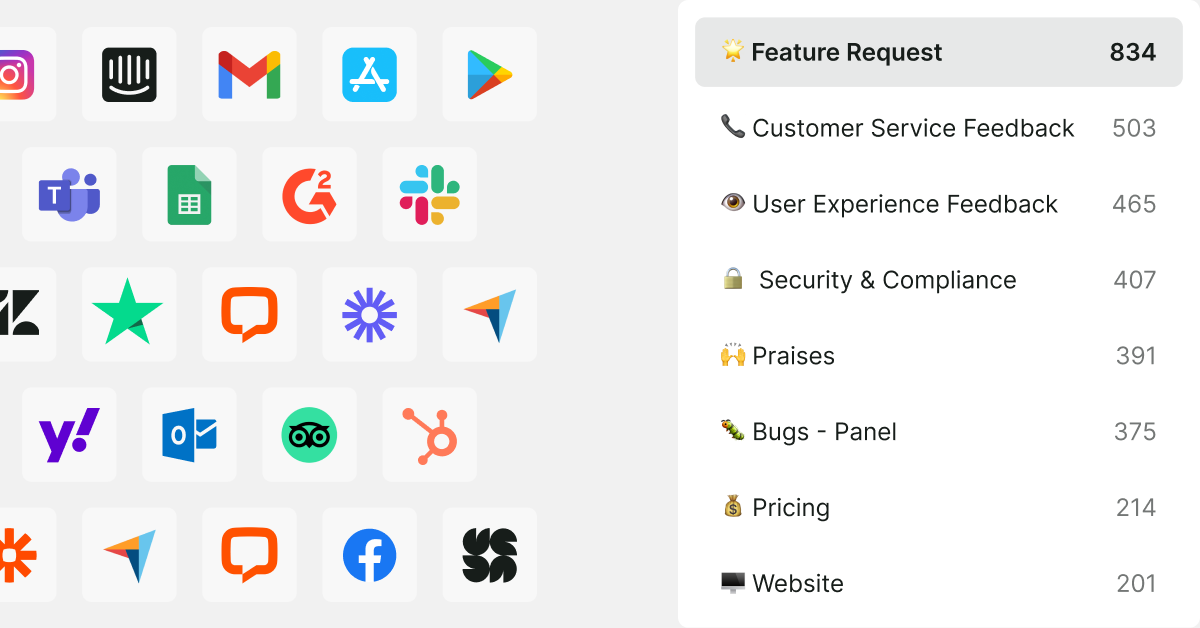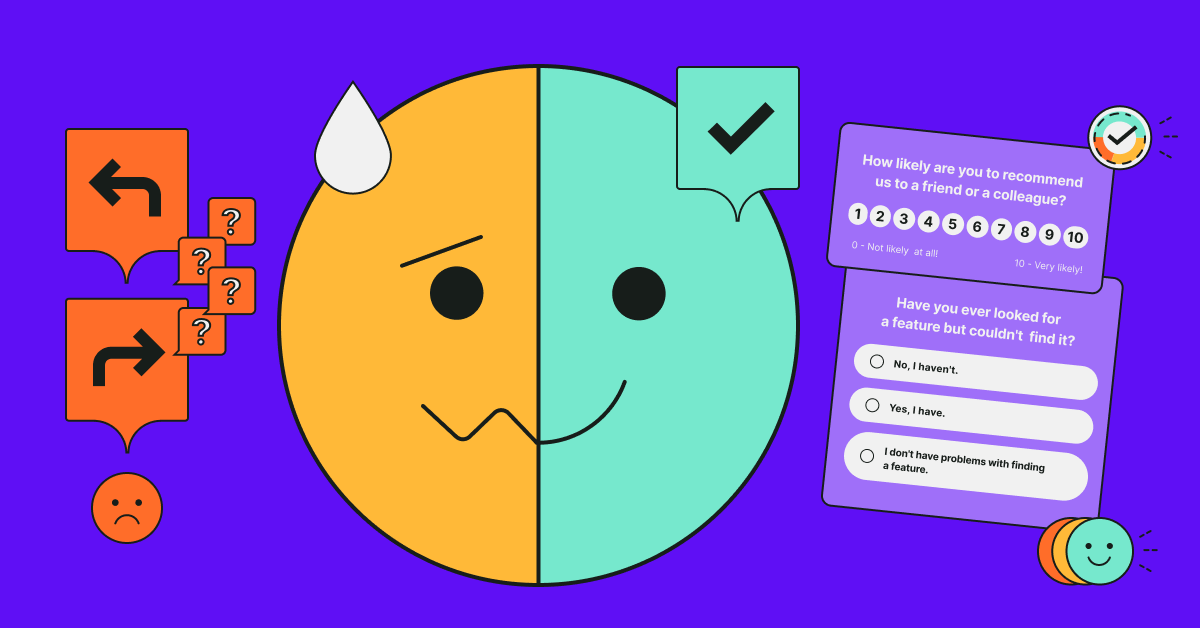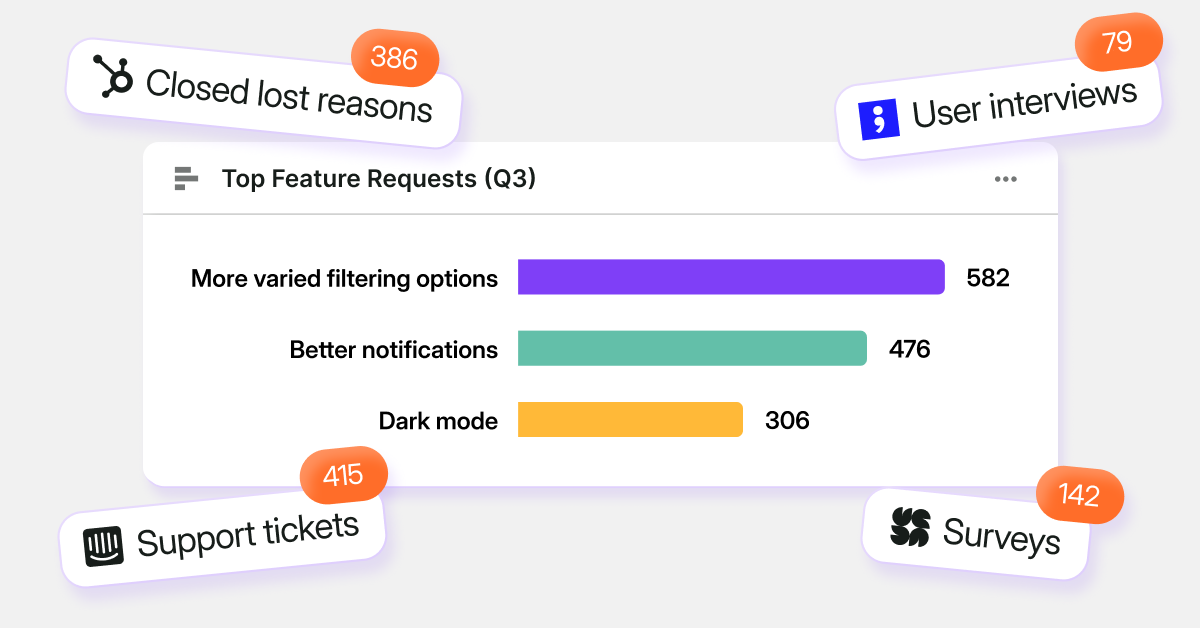Tl; dr;
- Diverse types of buying behavior: Marketers must recognize and address the different buying behaviors—complex, dissonance-reducing, habitual, and variety-seeking—to effectively engage with each customer segment's unique decision-making process and motivations.
- Collecting customer feedback: Utilizing online surveys can reveal consumer needs, pain points, and expectations. This direct feedback informs product development and targeted marketing efforts.
- The role of social influence: Consumers are heavily influenced by their social circles, including family, friends, and social media. Marketing strategies should leverage social proof and influencer partnerships to tap into these networks.
- Cultural and subcultural impact: You have to understand and respect cultural values and subcultural preferences to tailor products and campaigns that resonate with diverse consumer groups.
- Technological advancements shaping shopping: E-commerce, personalized CX, and mobile commerce have transformed consumer behavior. Marketers should harness data analytics and create seamless omnichannel experiences to meet modern shoppers' expectations.

Unlocking the secrets of customer buying behavior isn't just about data—it's about understanding the story behind the purchase.
Tailored for marketers and business strategists, this article dives into the complexities of consumer choices.
We'll dissect the factors that drive buying decisions and how these insights can refine marketing tactics to resonate with diverse audiences. Read on to elevate your marketing game with the power of behavioral insights.
What is Consumer Buying Behavior?
Consumer buying behavior refers to consumers' purchasing decisions and actions as they choose among various products, services, and brands. It encompasses various activities and processes that individuals or groups go through before, during, and after making a purchase.
Buying behaviors are shaped by various internal and external factors ⤵️
Factors influencing customer purchases
- Personal factors: Your age, occupation, lifestyle, and economic situation can influence what and how you buy.
- Psychological factors: Your perception, motivation, and beliefs can drive purchasing decisions.
- Social factors: The influence of family, friends, and society plays a role in your buying behavior.
- Cultural factors: Your culture and subculture set the groundwork for your values and attitudes toward purchasing.
Stages of consumer buying behavior
- Need recognition: You recognize a need or a problem that prompts you to consider a purchase.
- Information search: You seek information about products or services that meet your needs.
- Evaluation of alternatives: You compare different products, brands, or services to find the best fit for your needs.
- Purchase decision: You decide on a product and proceed with the purchase.
- Post-purchase behavior: After purchasing, your experience with the product affects future decisions.

Types of customer buying behavior
Understanding different types of consumer buying behavior is essential to effectively targeting and meeting the needs of various consumer segments.
Complex buying behavior
You exhibit complex buying behavior when you're faced with making a high-involvement purchase that is expensive and infrequent.
Such behavior typically involves extensive research and a careful evaluation of different brands and products before making a decision.
Complex buying behavior is common for items like cars or homes, where you have a significant interest in the product and the outcome of your purchase.
Dissonance-reducing buying behavior
Dissonance-reducing buying behavior occurs when you make a purchase but perceive very little difference among brands.
You might experience post-purchase dissonance if you are not completely sure about the product's performance. You're likely to rely on availability or other minor aspects rather than extensive product research, often when buying products such as appliances, to reduce this dissonance.
Habitual buying behavior
When you engage in habitual buying behavior, you tend to purchase a product out of habit without much deliberation or product comparison.
This behavior is typical for low-cost, regularly purchased items like household groceries or cleaning supplies, where brand loyalty is minimal, and the purchase decision requires minimal effort.
Variety-seeking buying behavior
Variety-seeking buying behavior is when you frequently switch between brands not due to dissatisfaction but out of a desire for new experiences.
This behavior is often observed in categories with numerous similar choices where you can experiment without a significant financial or emotional risk, like trying new snack flavors or restaurant choices.
Analyzing and predicting buying behavior
Understanding and predicting customer behavior is essential to tailor strategies that meet consumer needs and enhance business growth.
Customer data analysis
Your ability to analyze customer data effectively is the key to understanding consumers' purchasing decisions.
Purchase behavior, demand levels, and retention rates provide insight into what your customers are inclined to buy and their loyalty to your brand. Employing tools like CRM systems helps collect and organize this data, including demographic information, past purchase history, and customer feedback.
Ask for customer feedback with online surveys to gather actionable insights into consumer buying behavior. They're a direct channel between you and your target audience, providing both qualitative and quantitative data.
Predictive analytics
Predictive analytics involves using data, statistical algorithms, and machine learning techniques to identify the likelihood of future outcomes.
By comparing patterns from past behaviors, you can forecast demand trends and customer responses to your marketing efforts. This empowers you to make data-driven decisions, such as optimizing inventory levels to match predicted sales volumes.
Cultural impact on buying behavior
Understanding how culture influences consumer behavior is essential for effective marketing.
Different cultural backgrounds are important factors that influence consumer buying habits and preferences, affecting how products are perceived, valued, and utilized.
Role of cultural values
Cultural values determine the core beliefs and principles, influencing buying decisions.
For instance, if sustainability is a key value within a culture, you are more likely to purchase eco-friendly products. Cultural rituals are also factors affecting buying behavior; purchases may increase around certain cultural ceremonies due to traditional practices.
Impact of subculture
Subcultures, smaller cultural groups within a larger culture, bring distinct buying patterns. These can include age groups, ethnic groups, or hobby-based communities.
For example, the buying behavior of millennials within your society may differ significantly from that of older generations, reflecting variations in values and lifestyle across subcultures.
Cross-cultural consumer behavior
Cross-cultural consumer behavior examines various factors influencing buying patterns across different cultures. Understanding these can help you predict how consumers in different parts of the world might respond to global product launches or marketing campaigns.
For example, the red color might attract consumers in one culture because it symbolizes good luck, while it may deter consumers in another culture where it represents danger.
Social influences on purchasing behavior
Social factors often influence consumer behavior, with family, social class, and peer relationships playing pivotal roles in the products customers choose to buy.
Family influence
Brand preferences, shopping behaviors, and product loyalty are often passed down from parents to children.
Moreover, family needs and responsibilities can dictate the type of prioritized products—necessities for a family with children might differ from those of a single individual.
Social class and buying patterns
The social class indicates the income level, education, occupation, and lifestyle people lead. It fundamentally influences their purchase decisions and preferences.
For example, a higher social class might correlate with a tendency toward purchasing luxury goods, while those from a more modest class may focus on value for money or practical purchases.
Reference groups and peer pressure
Friends, colleagues, and broader social networks, known as reference groups, are also factors that influence buying choices.
Peer recommendations may sway people to purchase items that align with their group's norms or status indicators. Social media influencers and communities also act as modern reference groups, affecting purchase behavior.
Personal factors and buying behavior
Unique personal attributes play an undeniable role in influencing buying behavior. Each aspect can signal different preferences and needs, impacting what, how, and when someone buys.
- Age and life-cycle stage
- Occupation and economic circumstances
- Personality and self-concept
The role of marketing in buying behavior
Marketing practices significantly shape buying decisions. The intricate interplay between various marketing tactics can determine everything from the initial interest to the final purchase and ongoing loyalty.
Advertising and promotions
Advertising and promotions are designed to capture attention and position products or services as indispensable for certain lifestyles.
For instance, a television advertisement might showcase the high performance of a new smartphone, compelling you to consider its purchase. Similarly, online promotions often leverage urgency by offering limited-time discounts, prompting quicker decisions.
Product placement strategy
Consumer buying behavior can be subtly influenced by product placement. When people see products integrated into the content they enjoy, like a favorite TV show or influencer blog, it creates a sense of familiarity and desirability.
For example, a character in a film using a specific brand of headphones may increase your preference for that brand, especially if you resonate with the character.
Branding and customer loyalty
Branding goes beyond logos and catchphrases; it encapsulates the entire experience with a product. Effective branding builds a connection with the product, fostering customer loyalty.
For instance, when you buy a North Face jacket, you're not just purchasing outerwear; you're buying into an adventurous and outdoorsy brand image. This loyalty often results in repeat purchases and recommendations to your peers.

Technological impact on buying behavior
Technologies have significantly altered how you shop, influencing decisions from the point of interest to the final purchase.
E-commerce trends
The rise of e-commerce has shifted your shopping experiences from traditional brick-and-mortar stores to digital platforms. Online retailers use data analytics to offer personalized recommendations, which can influence your buying behavior.
The convenience and variety available online have resulted in a steady increase in online shopping.
- Personalization: Products tailored to your preferences.
- Omnichannel customer experience: The entire experience is encompassing and consistent across all channels
- Convenience: Shop anytime, anywhere.
Social media influence
Purchasing decisions are frequently affected by what people see on social media platforms. Influencers and peers can sway opinion, promoting brand awareness and sometimes directly facilitating purchases through social media channels.
- Influencer endorsement: Influencers suggesting products.
- Peer recommendations: Friends sharing their purchases.
Mobile commerce and shopping apps
With the ubiquity of smartphones, mobile commerce has become a dominant form of shopping. Apps provide an on-the-go means to browse, compare, and buy products, making your shopping experience seamless and instant.
- Ease of Use: One-click ordering systems.
- Notifications: Real-time updates on deals and promotions.
Learn how your customers buy with Survicate
The intricate tapestry of consumer buying behavior presents both a challenge and an opportunity for marketers.
To effectively engage with customers and tailor marketing strategies, it is crucial to understand the various factors influencing their purchasing decisions.
Survicate survey software may be the tool to consider. This intuitive platform for creating surveys can capture consumers' nuanced preferences, pain points, and expectations. With features like customizable survey templates, advanced analytics, and numerous integrations, Survicate equips you with the means to make informed decisions that can transform your marketing approach.
By using Survicate, you can bridge the gap between customer behavior and marketing strategy, ensuring your campaigns hit the mark every time.
Ready to elevate your marketing intelligence? Sign up for Survicate's 10-day free trial, which grants you full access to all the Business Plan features, and start uncovering the insights that will drive your business forward.














.svg)

.svg)



